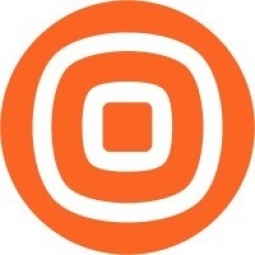Technology Category
- Networks & Connectivity - 5G
- Platform as a Service (PaaS) - Application Development Platforms
Applicable Industries
- Electronics
- Healthcare & Hospitals
Applicable Functions
- Procurement
- Sales & Marketing
Use Cases
- Chatbots
About The Customer
ELARABY Group, established in 1964, has grown from a joint-stock family enterprise to one of the largest industrial and commercial corporations in Egypt, the Middle East, and Africa. The Group operates through 16 commercial, industrial, medical, and service companies, in four different governorates with 26 industrial facilities, and 2 hospitals. In 2020, ELARABY’s workforce exceeded 40,000 employees. The Group’s brand portfolio consists of more than 16 global brands with 30 product categories and more than 4,000 variations. The company exports to over 60 countries and has 3,000 sales partners and more than 25 branded stores locally, backed by more than 600 after-sales service centers.
The Challenge
ELARABY Group, a leading home appliances and electronics manufacturer in Egypt, has been experiencing exponential growth, exporting to over 60 countries worldwide. With over 3,000 sales partners, 25 branded stores locally, and more than 600 after-sales service centers, the company has a growing customer and partner base. This growth brought about the need to improve customer experience and engagement. The company was keen to identify the right channel to best handle their customer experience requirements on a large scale. They quickly identified that their communication with clients needed to be fast, reliable, and satisfactory to the growing expectations of those they served. To address these challenges, and as part of their ongoing mission to engage in digital transformation and customer experience (CX), ELARABY Group sought a quick-to-market solutions partner.
The Solution
ELARABY Group selected Infobip as their WhatsApp Business Platform solution provider and established their first chatbot to assist customers with common queries including billing, purchase processing, order status, and delivery notifications. This formed the communication queue for their sales channel. Subsequently, they added Conversations, a digital-first cloud contact center, along with the chatbot building platform, Answers. This solution provided an omnichannel communication platform for the company. The establishment of a simple workflow model facilitated the integration of these solutions into their existing systems. The combination of Conversations and Answers provided a more compelling way for ELARABY Group to engage with customers.
Operational Impact
Quantitative Benefit

Case Study missing?
Start adding your own!
Register with your work email and create a new case study profile for your business.
Related Case Studies.

Case Study
Remote Temperature Monitoring of Perishable Goods Saves Money
RMONI was facing temperature monitoring challenges in a cold chain business. A cold chain must be established and maintained to ensure goods have been properly refrigerated during every step of the process, making temperature monitoring a critical business function. Manual registration practice can be very costly, labor intensive and prone to mistakes.

Case Study
Hospital Inventory Management
The hospital supply chain team is responsible for ensuring that the right medical supplies are readily available to clinicians when and where needed, and to do so in the most efficient manner possible. However, many of the systems and processes in use at the cancer center for supply chain management were not best suited to support these goals. Barcoding technology, a commonly used method for inventory management of medical supplies, is labor intensive, time consuming, does not provide real-time visibility into inventory levels and can be prone to error. Consequently, the lack of accurate and real-time visibility into inventory levels across multiple supply rooms in multiple hospital facilities creates additional inefficiency in the system causing over-ordering, hoarding, and wasted supplies. Other sources of waste and cost were also identified as candidates for improvement. Existing systems and processes did not provide adequate security for high-cost inventory within the hospital, which was another driver of cost. A lack of visibility into expiration dates for supplies resulted in supplies being wasted due to past expiry dates. Storage of supplies was also a key consideration given the location of the cancer center’s facilities in a dense urban setting, where space is always at a premium. In order to address the challenges outlined above, the hospital sought a solution that would provide real-time inventory information with high levels of accuracy, reduce the level of manual effort required and enable data driven decision making to ensure that the right supplies were readily available to clinicians in the right location at the right time.

Case Study
Gas Pipeline Monitoring System for Hospitals
This system integrator focuses on providing centralized gas pipeline monitoring systems for hospitals. The service they provide makes it possible for hospitals to reduce both maintenance and labor costs. Since hospitals may not have an existing network suitable for this type of system, GPRS communication provides an easy and ready-to-use solution for remote, distributed monitoring systems System Requirements - GPRS communication - Seamless connection with SCADA software - Simple, front-end control capability - Expandable I/O channels - Combine AI, DI, and DO channels

Case Study
Driving Digital Transformations for Vitro Diagnostic Medical Devices
Diagnostic devices play a vital role in helping to improve healthcare delivery. In fact, an estimated 60 percent of the world’s medical decisions are made with support from in vitrodiagnostics (IVD) solutions, such as those provided by Roche Diagnostics, an industry leader. As the demand for medical diagnostic services grows rapidly in hospitals and clinics across China, so does the market for IVD solutions. In addition, the typically high cost of these diagnostic devices means that comprehensive post-sales services are needed. Wanteed to improve three portions of thr IVD:1. Remotely monitor and manage IVD devices as fixed assets.2. Optimizing device availability with predictive maintenance.3. Recommending the best IVD solution for a customer’s needs.









